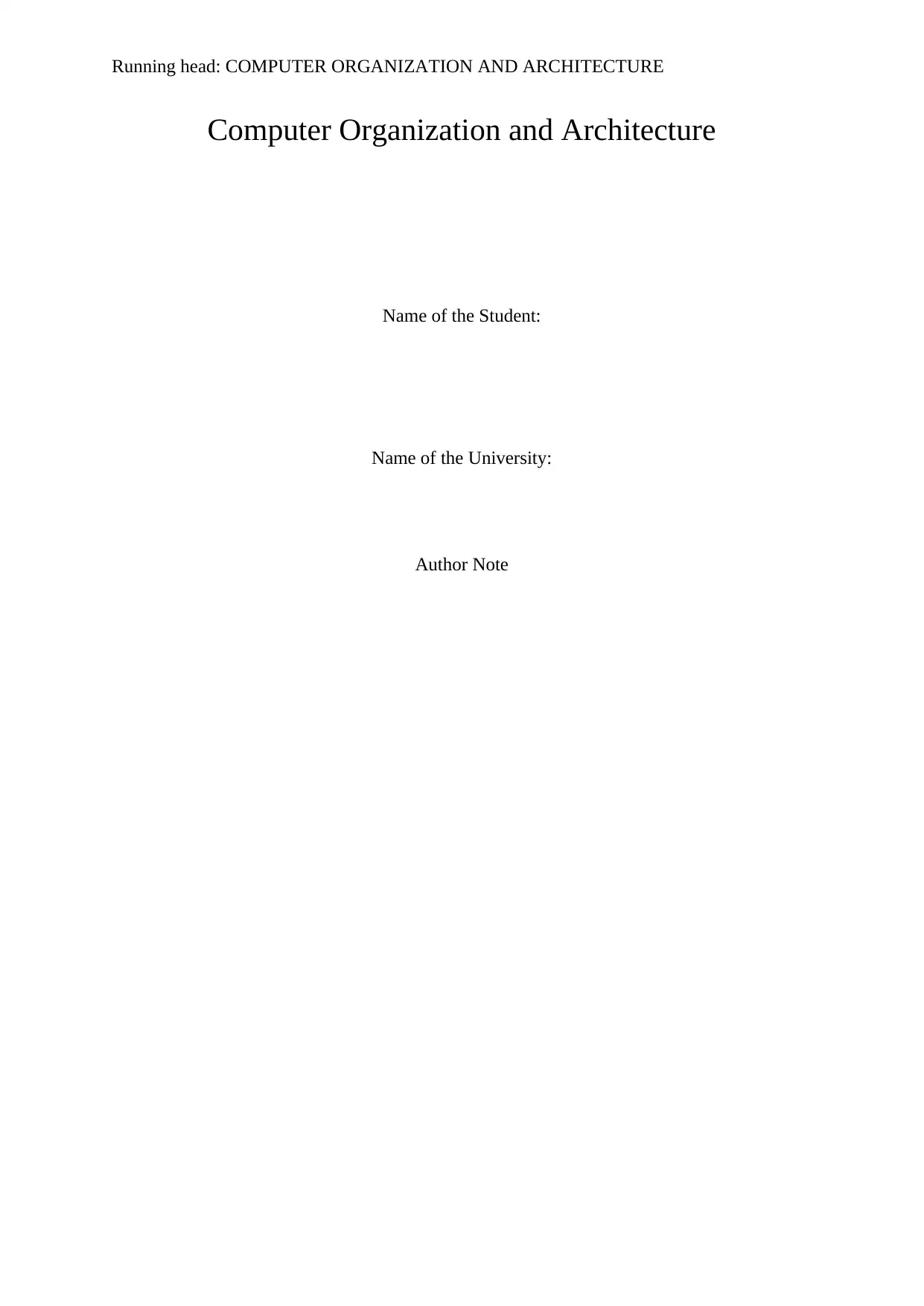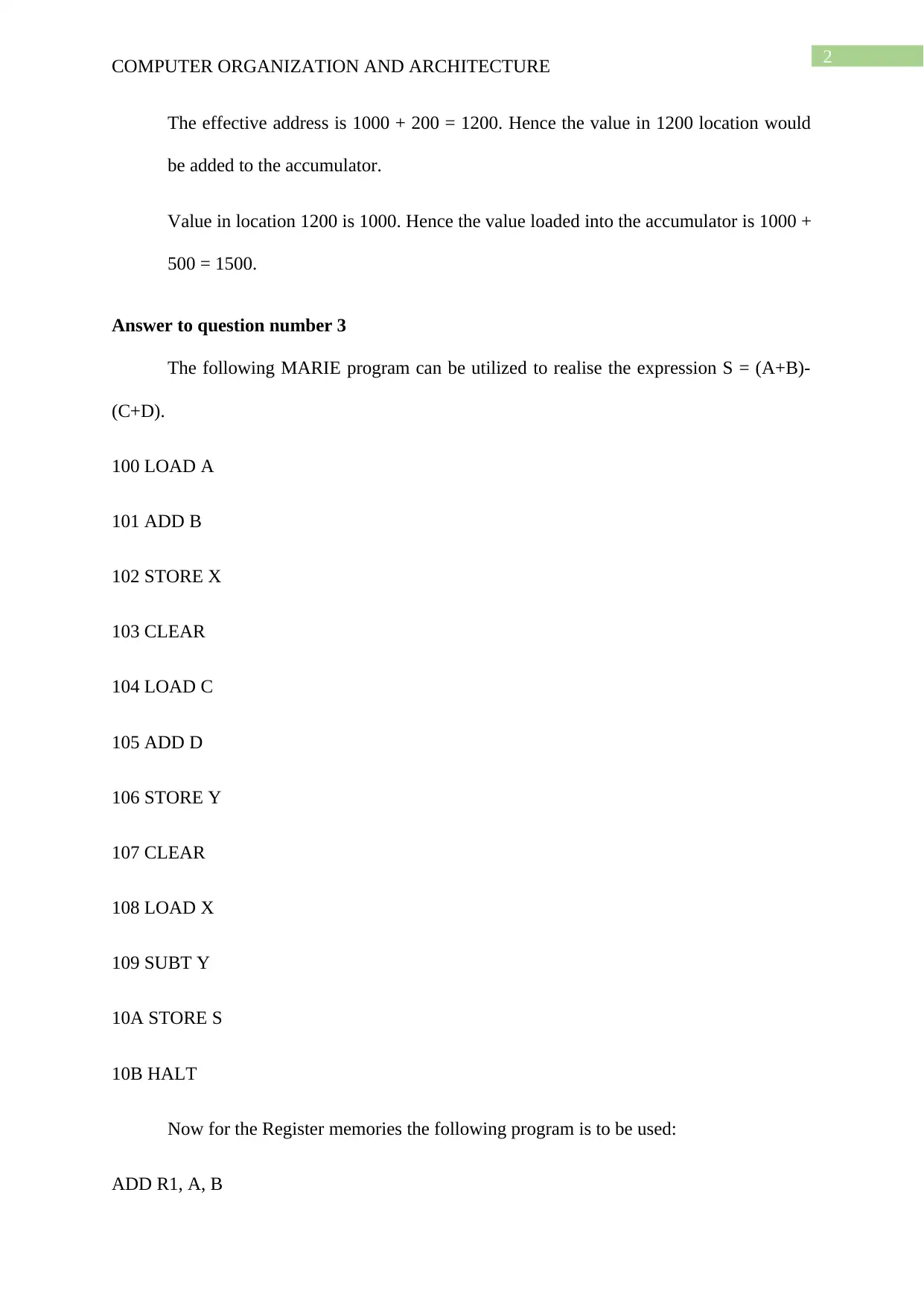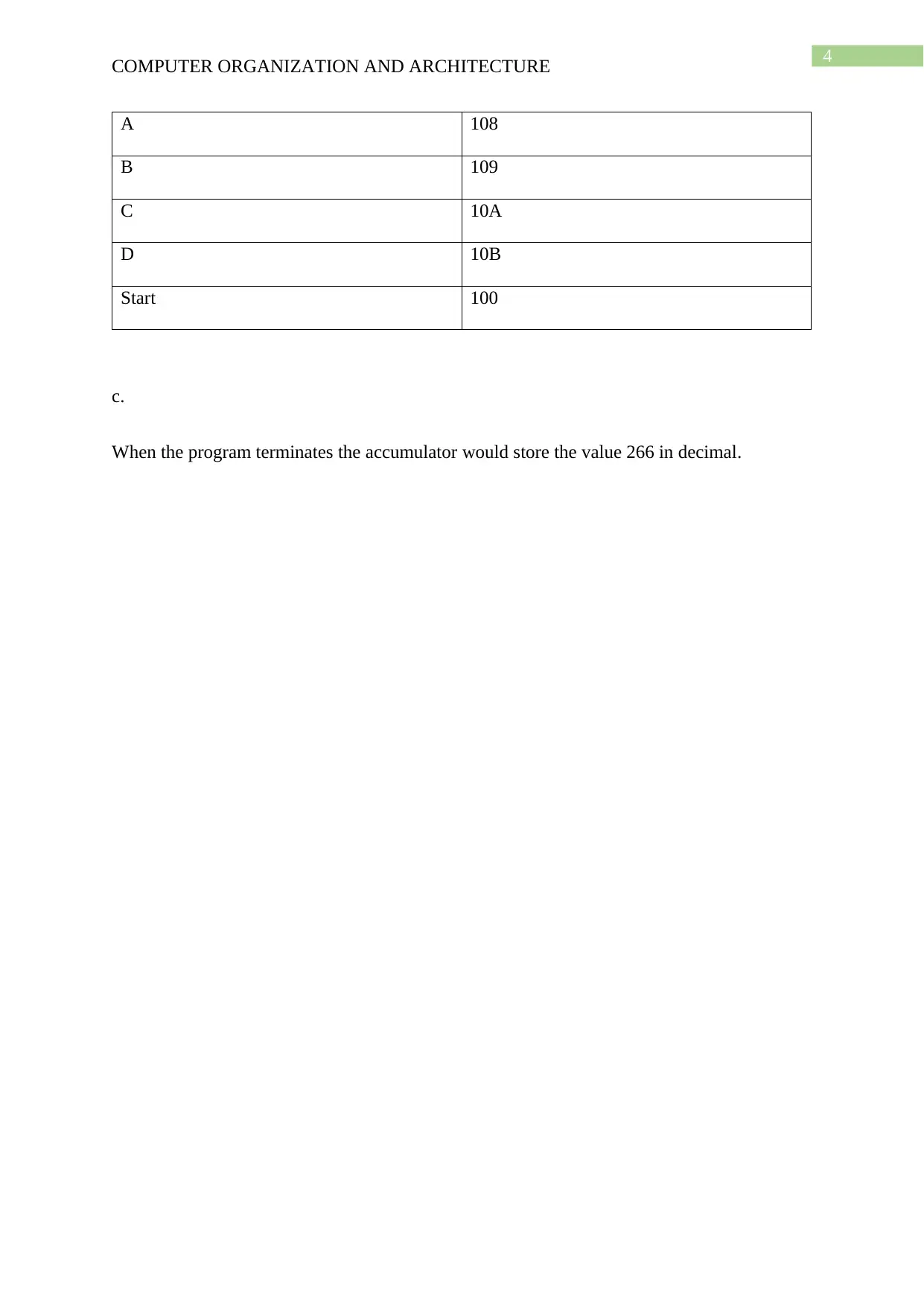Computer Organization and Architecture
VerifiedAdded on 2023/06/05
|5
|507
|224
AI Summary
This article discusses computer organization and architecture, covering topics such as memory size, addressing modes, and programming. It includes answers to questions on opcode, word size, memory size, and addressing modes. The article also provides a MARIE program for realizing an expression and a program for register memories.
Contribute Materials
Your contribution can guide someone’s learning journey. Share your
documents today.
1 out of 5
![[object Object]](/_next/static/media/star-bottom.7253800d.svg)





